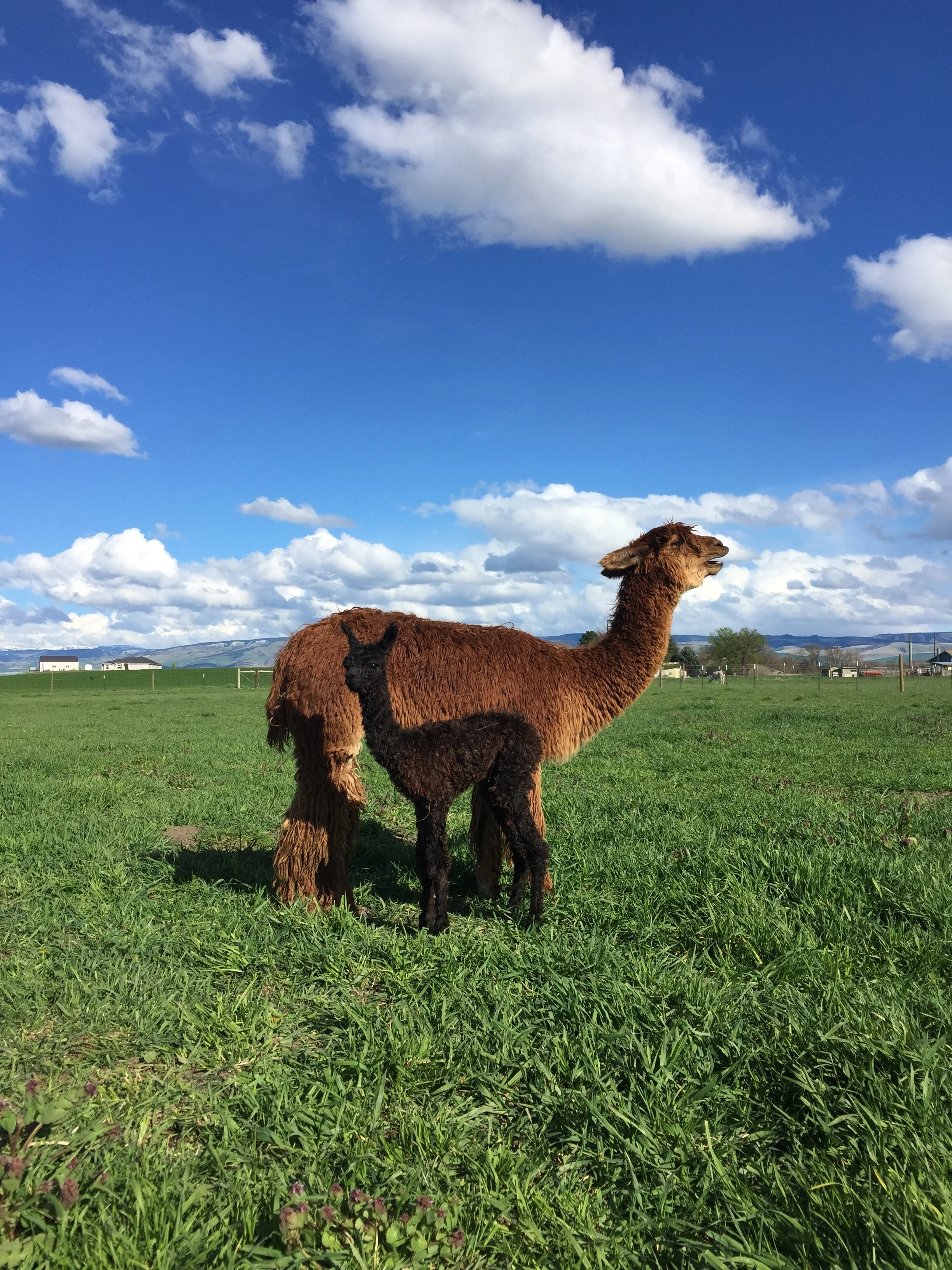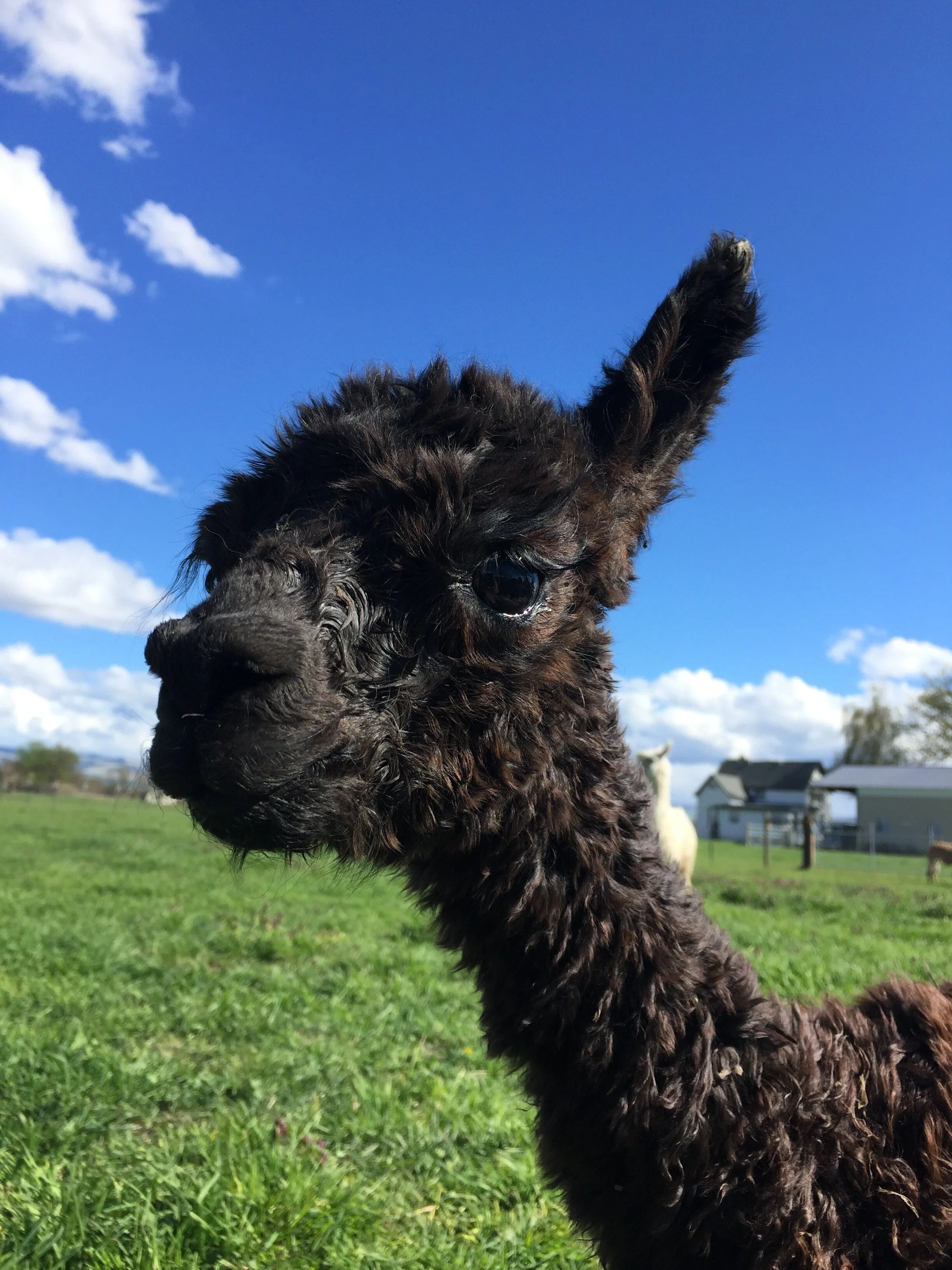Baby Watch 2020
If cows calve…
and sheep lamb…
Then, alpacas unpack.
Haha, I made that last part up! But it seems perfectly fitting & adorably accurate!
As we await the arrival of 3 new cria (kree-ah) into our herd this spring, I thought I’d give you a little Unpacking 101.
Before I dive into the specifics, I feel I need to give a little back story first. Not only to give you a window into our excitement for the next crop of cria, but to share a little of our farming philosophy.
We took 2018 ‘off’ from having babies. As insanely hard as it was to forgo a full year having any sweet little ones pronking around the pastures, we did this for a number of reasons:
To reassess our herd’s genetic potential against our fiber production requirements. Alpacas can live up to 20 years, we must be mindful in what we produce. For financial sustainability, we really only need to produce fiber that we have a market demand for each year. And with that, we want to produce as consistent of fiber across the herd as a whole.
To reassess what our pastures could sustain. Fresh grass is the best forage. The longer they can graze on high quality grass, the better their health. Better health = less management & lower overall production costs. And for our farm operation, which is just shy of 8 acres in pasture, we are too small to implement conventional hay production. This means we must supplement with hay from others in the ‘off season’. Our goal is to graze the herd for as long as we can each growing season - right now that’s from April through October. This isolates hay costs to 5 months a year.
To get everyone on the same unpacking schedule. For our first 5 years, we raised a large number of animals for another alpaca farm. That farm raised seed stock (versus for fiber production like us), so every female was bred and their due dates were spread out over the entire year - as early as May & running clear through October. As were our own bred females. Taking a gap year meant we could get everyone on the same schedule - this allows us to concentrate the management & labor for both breeding & birthing activities.
Basic facts -
gestation is 11 months
twins are exceptionally rare and usually don’t survive
unpacking usually happens in morning
vast majority require no birthing assistance
takes less than 30 minutes to deliver from start to finish
I’d like to highlight a couple of these facts today.
Morning arrivals - generally between 8am and noon. I’m not certain why this is but I speculate it has something to do with their origins. Alpacas are natives to the high altitudes of the altiplano in South America. I surmise it is important to be born, dried off, and walking before it gets cold and dark. Or perhaps they are more dramatic than I give them credit for - and they just like to be as semi-specific as the cable guy? Either way, their reliable promptness allows me to wrap up ‘baby watch’ by lunch time. A late evening or nighttime arrival usually spells trouble.
No assistance usually required. My only concerted help is to separate impending moms-to-be in our makeshift maternity ward - a grassy, shady area cordoned off so we can monitor them right before, during & after delivery. To be honest, this concept was borne out of convenience, as I’ve had to hunt the pastures in search of the placenta enough to realize it’s best to section them off in a smaller area. In terms of actual delivery, they birth on their own - the front feet come first, followed by the head and neck, with the chest cavity being the largest dimension. Assistance is rare and often times is more of an unhelpful & potentially harmful interference. Relying on their intelligent design and knowing when you’re truly needed is the greatest struggle of my shepherdess heart. It’s a skill that is earned over time, and usually by way of heartache and failure, unfortunately.
It’s quick! Unlike the long 11 month gestation, actual birthing happens fairly fast. One time, I noticed a dam (mom) in position, by the time I ran to the barn to get the birth kit & came back, the cria was already on the ground! That’s what I call a perfect unpack! When I’m able to view the entire process, from the first showing to hitting the ground, it’s typically 20 minutes or less. And it’s not just the delivery that’s fast, all of the major after-birth functions happen quickly as well. The cria is upright and sitting within 15 minutes, attempting to stand and walking within 30, and had it’s first drink & drunken stroll within the first full hour.
We are excited that 3 new cria should be joining our herd this spring. I’ll write a follow up post on the expectant moms, but as a reward for reading this far, here are some adorable cria pictures to enjoy!
Sofia was the first dam to give birth on our farm. We named her cria Indy.
Indy, just a few hours old.
Baby Rocky Balboa, 2015
Baby Rocky with his dam, Kami
Me & Rocky B!






